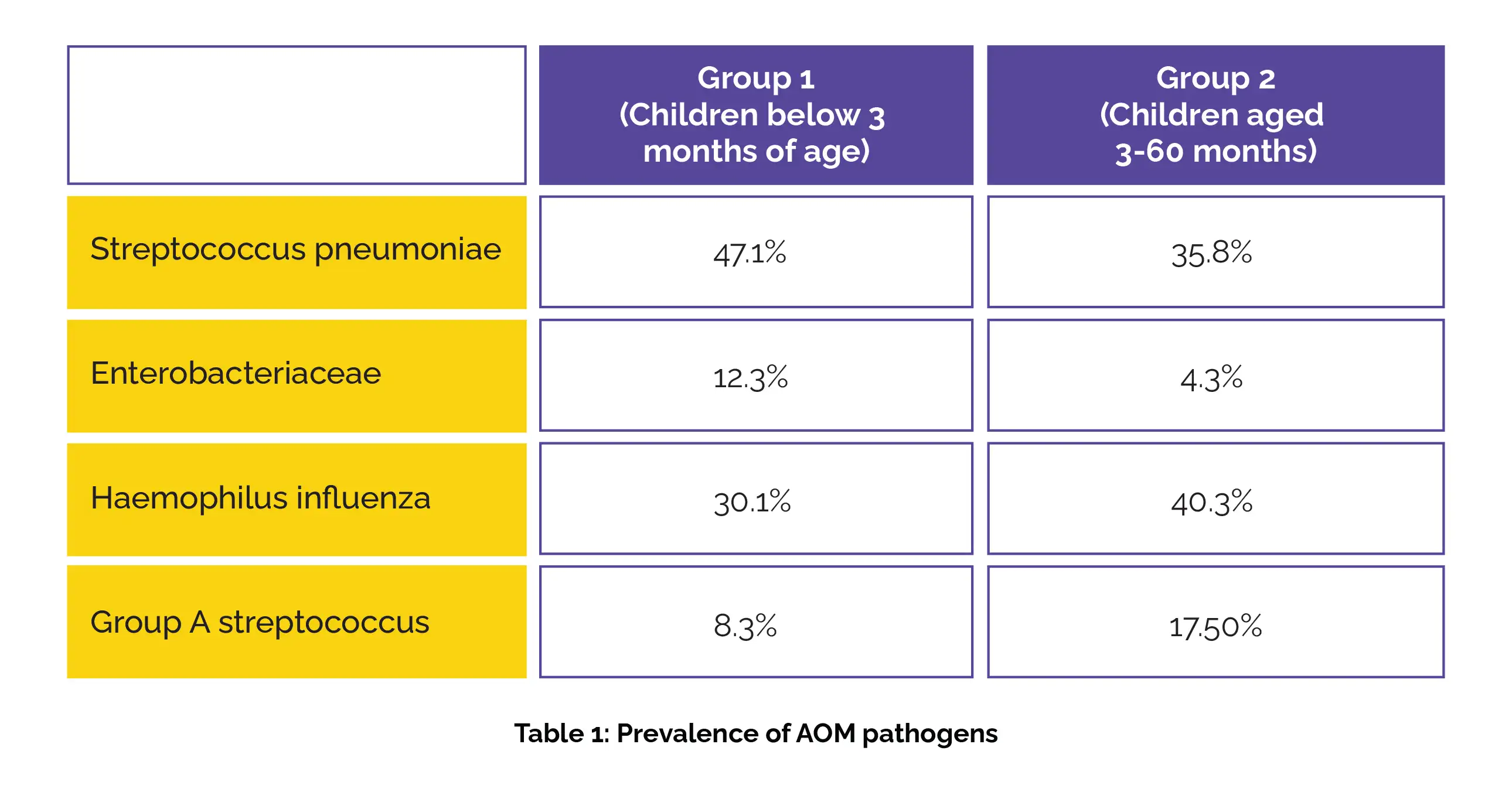Categories
Change Password!
Reset Password!


In neonates, Streptococcus pneumoniae and Enterobacteriaceae are more common acute otitis media pathogens. Furthermore, the prevalence of Group A streptococcus increases in this age group following PCV13 introduction.
In a recent study, investigators have shed light on the previously scantily explored bacteriology of acute otitis media (AOM) in neonates. The study, conducted through retrospective bacteriological analysis, aimed to unravel the microbial landscape of AOM in children under 60 months of age, with a particular focus on those under 3 months.
The impact of pneumococcal conjugate vaccine (PCV13) and the method of delivery, whether cesarean section or vaginal delivery, was examined and contrasted in terms of their influence on AOM bacteriology. This assessment was conducted in two distinct groups: children below 3 months of age (Group 1) and those aged 3-60 months (Group 2).
Key Findings:
1. Prevalence Variation: The study revealed a significant difference in the prevalence of key pathogens between neonates (Group 1) and older children (Group 2). Streptococcus pneumoniae and Enterobacteriaceae were more prevalent in Group 1 compared to Group 2. On the other hand, the prevalence of Haemophilus influenza and Group A streptococcus was higher in Group 2, as shown in Table 1:

2. Mode of Delivery Impact: Surprisingly, the mode of delivery, whether cesarean section or vaginal delivery, did not exhibit a profound effect on AOM bacteriology in either neonates or older children.
3. PCV13 Influence: The introduction of the PCV13 showcased a notable shift in bacteriological patterns. Group A streptococcus prevalence was found to increase in neonates from 7% to 15%.
The study's findings provide crucial insights into neonatal AOM, contributing valuable data for the formulation of treatment guidelines. Streptococcus pneumoniae and Enterobacteriaceae were identified as more common AOM pathogens in neonates, challenging existing perceptions. Additionally, the unexpected rise in Group A streptococcus prevalence following PCV13 introduction emphasizes the importance of continued vigilance in vaccine-related studies.
Harefuah
[ACUTE OTITIS MEDIA BACTERIOLOGY IN CHILDREN YOUNGER THAN THREE MONTHS IN THE LAST 16 YEARS]
Miki Paker et al.
Comments (0)